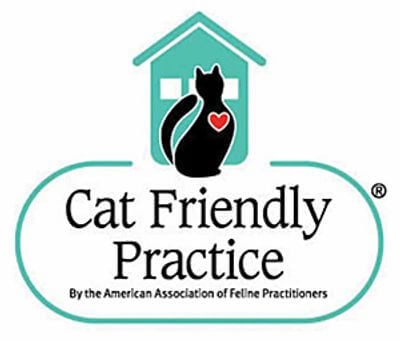As a pet owner, you’ve most likely heard the phrase “quality of life” in regard to your dog, especially if they are at an older age or living with a chronic illness. Hearing those three words can spark a bit of anxiety, sadness, and even guilt because they often come up during some of the most difficult moments of pet ownership.
As pet parents, we want nothing more than for our dogs to live long, happy lives. We learn to read our dogs and understand when they need or want something. A paw on the bell to the door, a dance around the kitchen before dinner, or a standoff by the treat jar. But as our pets age or face serious health challenges, it can become harder to interpret their needs and know how they’re truly feeling. “Quality of life” (QOL) is a way to look at your dog’s overall wellbeing — physically, emotionally, and mentally — to help guide care decisions and, when necessary, prepare for the hardest choices.
What Does “Quality of Life” Mean?
When we talk about quality of life for a dog, it’s more than just the absence of illness or ailment. Quality of life is a full picture of your dog’s day-to-day comfort, activity level, and health status. A good quality of life means your dog can participate in the activities that matter to them, remain relatively pain-free, and maintain physical, emotional, and social well-being.
Because every dog is unique, quality of life can look different from one dog to the next. A senior dog who spends most of the day napping in a sunny spot may still have an excellent quality of life, while another dog who lives for long hikes and outings may struggle emotionally if they aren’t able to participate anymore.
Who Can Assess My Dog’s Quality of Life?
You know your dog better than anyone. You understand their personality, their quirks, and the difference between a “good day” and a “bad day.” You see the subtle changes — the shift in energy, the hesitation before climbing stairs, the loss of interest in a favorite game, and the little intricacies that others might miss. You also know their eating habits and bathroom routines, making you the best person to start the assessment.
That said, your veterinarian plays an important role in this process. They can provide a medical perspective, ask you guiding questions you may not have considered, and help you interpret what changes in behavior or health might mean. Together, you can create a clear, complete picture of your dog’s quality of life and discuss options for care or comfort.

Quality of Life Indicators for Dogs
Once you’ve identified that something may be changing, it helps to know what specific signs to look for. These can guide your observations and give you a clearer sense of whether your dog is still enjoying life as they should, or if they might be experiencing discomfort or stress.
Signs of Good Quality of Life for a Dog
- Engages with family and surroundings
- Enjoys favorite activities (walks, play, cuddles)
- Eats and drinks normally
- Moves comfortably, even if slower than before
- Sleeps peacefully and appears relaxed
Signs Quality of Life May Be Declining for a Dog
- Persistent pain despite treatment (whining, restlessness, changes in posture)
- Difficulty breathing or persistent coughing
- Struggling to stand, walk, or climb stairs
- Loss of interest in food or favorite treats
- Accidents in the house or inability to control elimination
- Withdrawal, hiding, or lack of interest in family interaction
- Confusion, disorientation, or unusual behaviors
Noticing these types of changes can be difficult and emotional, but tracking them over time can make your observations more objective and easier to share with your veterinarian.
How to Track Your Dog’s Quality of Life
If your dog’s health is changing slowly, it can be easy to adapt without realizing how much has actually changed. Tracking your dog’s quality of life helps you step back and see the bigger picture, rather than relying on memory or emotion in the moment. It’s important to remember that patterns matter more than single moments.
Good Day/Bad Day Calendar
This is a simple method where you mark a calendar each day with a symbol to represent what kind of day it was for your dog. This can be a smiley face or heart for a good day and a sad face or “X” for a bad day. Over time, you can see whether bad days are starting to outnumber good ones. This visual record can make patterns more obvious and easier to discuss with your veterinarian.
Daily or Weekly Logs
This method is similar to the good day/bad day calendar, but with more information to detail specific changes, such as appetite, water intake, mobility, breathing, bathroom habits, grooming, or overall mood. You can log this in a calendar, notebook, or just by jotting quick notes on your phone. Many pet owners find these small daily entries helpful for care decisions and reflections later.
Quality of Life Scales
There are a lot of different structured scoring tools that can help you evaluate your dog’s comfort across multiple areas like pain, appetite, mobility, hygiene, and happiness. You can complete these scales on a set schedule ( every three days or once a week) and compare results over time. Some owners find these tools give them clarity, while others prefer them as a way to track gradual changes rather than make an immediate decision.

When It Might Be Time to Consider Euthanasia
Using tracking tools and quality-of-life assessments doesn’t always mean the end is near. In many cases, your observations can help your veterinarian adjust pain medications, recommend physical therapy, suggest palliative care, or explore other options to improve your dog’s comfort.
However, these same tools can also make it clearer when your dog’s quality of life is declining despite treatment. If your records show that bad days are outnumbering good ones, or that your dog is consistently unable to eat, move comfortably, breathe easily, or enjoy the activities that make them happiest, it may be time to have a compassionate, honest conversation with your veterinarian about euthanasia.
Euthanasia is never an easy choice, but when a dog’s suffering outweighs their ability to experience joy or comfort, it can be a final act of love. Your veterinarian can help you understand your dog’s medical condition, explain what to expect, and support you in making the decision that’s best for your pet and your family.
Caring for Yourself Through the Process
Supporting a dog with a declining quality of life can be emotionally exhausting. You may feel sadness, guilt, or even relief at times — all of which are normal responses when you love a pet. Remember, caring for yourself is just as important as caring for your dog.
Lean on your support network of friends, family, and other pet owners to help you through the hard days. Pet loss support groups, online communities, and professional grief counselors can also help you navigate the emotions that come with this stage of your dog’s life.
It’s not an easy topic to think about, but it’s an important one. By understanding your dog’s quality of life, you can help ensure they receive the compassion, dignity, and respect they deserve in every stage of life.
If you’re concerned about your dog’s comfort or daily enjoyment, reach out to your veterinarian for a quality-of-life consultation. Together, you can explore options to keep your dog comfortable and supported for as long as possible.
If you have questions and you'd like to reach out to us, you can call us directly at (603) 287-1181, or you can email us at [email protected]. Don't forget to follow us on social media Facebook, Instagram.



